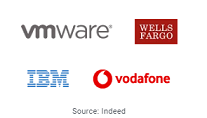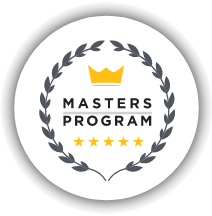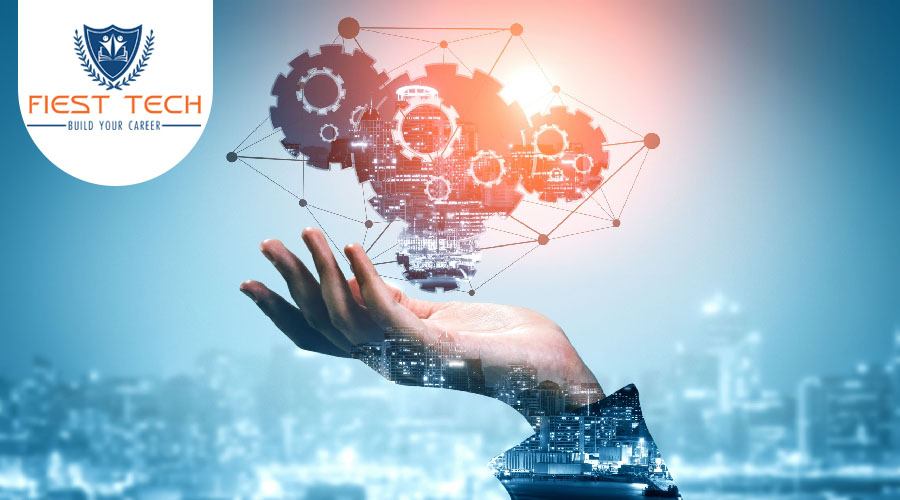CISM Course Overview
You will acquire the requisite skills to design, deploy, and manage security architecture for your organization with this CISM certification training from Fiest Tech. This course is aligned with ISACA best practices. Today, enterprises and government agencies increasingly expect their IT professionals to hold a CISM certification.
Cism Certification Training Key Features
At Fiesttech, we value the trust of our patrons immensely. But, if you feel that this Cism Certification Training does not meet your expectations, we offer a 7-day money-back guarantee. Just send us a refund request via email within 7 days of purchase and we will refund 100% of your payment, no questions asked!
- Exam Voucher Included
- ISACA Accredited Instructors
- 16 CPE’s offered
- 8X higher interaction in live online classes conducted by industry experts
Skills Covered
- Information Security Governance
- Information Security Incident Management
- Design security architecture
- Knowledge of ISACA domains
- Information security programs
- Enterprise IT frameworks
Benefits
CISM certification is a globally recognized professional requirement in the IT Security domain. This certification is best suited for security consultants and managers, IT directors and managers, security auditors and architects, security system engineers, CISOs, information security managers, and risk officers.
Annual Salary
Hiring Companies

Annual Salary
Hiring Companies

Annual Salary
Hiring Companies

GO AT YOUR OWN PACE
Training Options
Explore all of our training options and pick your suitable ones to enroll and start learning with us! We ensure that you will never regret it!
CISM Course Curriculum
Eligibility
CISM certification is a globally recognized professional requirement in the IT Security domain. This certification is best suited for security consultants and managers, IT directors and managers, security auditors and architects, security system engineers, CISOs, information security managers, IT consultants, and risk officers.
Pre-requisites
To become a CISM certified professional or to opt for this CISM course, you need to fulfill some criteria, including - A completed application submitted within five years from the date of initially passing the examination (you must ensure that all experience is independently verified by employers).
The experience must have been gained within the 10-year period preceding the application date for certification or within five years of passing the examination. Three of the five years of work experience must be gained in the role of an information security manager (it must be broad and gained in three of the four CISM domains)
Course Content
Live Course
Self Paced
-
1.01 - Lesson One: Information Security Governance Overview
00:53 -
1.02 - Information Security Governance Overview Part One
1:12 -
1.03 - Information Security Governance Overview Part Two
02:00 -
1.04 - Information Security Governance Overview Part Three
01:22 -
1.05 - Information Security Governance Overview Part Four
1:32 -
1.06 - Information Security Governance Overview Part Five
01:20 -
1.07 - Importance of Information Security Governance Part One
01:20 -
1.08 - Importance of Information Security Governance Part Two
06:20 -
1.09 - Outcomes of Information Security Governance Part one
1:30 -
1.10 - Outcomes of Information Security Governance Part Two
1:26 -
1.11 - Outcomes of Information Security Governance Part Three
01:20 -
1.12 - Outcomes of Information Security Governance Part Four
00:50 -
1.13 - Outcomes of Information Security Governance Part Five
1:30 -
1.14 - Outcomes of Information Security Governance Part Six
1:30 -
1.15 - Lesson Two: Effective Information Security Governance
00:31 -
1.16 - Business Goals and Objectives Part One
01:31 -
1.17 - Business Goals and Objectives Part Two
1:56 -
1.18 - Roles and Responsibilities of Senior Management Part One
1:02 -
1.19 - Roles and Responsibilities of Senior Management Part Two
00:40 -
1.20 - Domain Tasks Part One
1:30 -
1.21 - Domain Tasks Part Two
01:20 -
1.22 - Business Model for Information Security Part One
00:40 -
1.23 - Business Model for Information Security Part Two
00:50 -
1.24 - Business Model for Information Security Part Three
00:40 -
1.25 - Business Model for Information Security Part Four
01:37 -
1.26 - Dynamic Interconnections Part One
00:34 -
1.27 - Dynamic Interconnections Part Two
01:55 -
1.28 - Dynamic Interconnections Part Three
1:30 -
1.29 - Dynamic Interconnections Part Four
00:40 -
1.30 - Lesson Three: Information Security Concepts and Technologies
01:20 -
1.31 - Information Security Concepts and Technologies Part One
1:30 -
1.32 - Information Security Concepts and Technologies Part Two
03:25 -
1.33 - Information Security Concepts and Technologies Part Three
00:50 -
1.34 - Technologies Part One
1:41 -
1.35 - Technologies Part Two
1:30 -
1.36 - Lesson Four: Information Security Manager
00:50 -
1.37 - Responsibilities
01:20 -
1.38 - Senior Management Commitment Part One
00:40 -
1.39 - Senior Management Commitment Part Two
1:30 -
1.40 - Obtaining Senior Management Commitment Part One
00:50 -
1.41 - Obtaining Senior Management Commitment Part Two
1:30 -
1.42 - Establishing Reporting and Communication Channels Part One
00:50 -
1.43 - Establishing Reporting and Communication Channels Part Two
00:40 -
1.44 - Lesson Five: Scope and Charter of Information Security Governance
1:30 -
1.45 - Assurance Process Integration and Convergence
01:20 -
1.46 - Convergence
2:32 -
1.47 - Governance and Third-Party Relationships
00:40 -
1.48 - Lesson Six: Information Security Governance Metrics
00:30 -
1.49 - Metrics
1:40 -
1.50 - Effective Security Metrics Part One
01:20 -
1.51 - Effective Security Metrics Part Two
01:20 -
1.52 - Effective Security Metrics Part Three
00:40 -
1.53 - Effective Security Metrics Part Four
00:39 -
1.54 - Security Implementation Metrics
01:20 -
1.55 - Strategic Alignment Part One
00:40 -
1.56 - Strategic Alignment Part Two
1:30 -
1.57 - Risk Management
00:40 -
1.58 - Value Delivery
00:50 -
1.59 - Resource Management Part One
1:30 -
1.60 - Resource Management Part Two
00:40 -
1.61 - Performance Measurement
03:06 -
1.62 - Performance Measurement
00:30 -
1.63 - Assurance Process Integration/Convergence
00:50 -
1.64 - Lesson Seven: Information Security Strategy Overview
00:30 -
1.65 - Another View of Strategy
00:40 -
1.66 - Lesson Eight: Creating Information Security Strategy
00:50 -
1.67 - Information Security Strategy
00:30 -
1.68 - Common Pitfalls Part One
00:50 -
1.69 - Common Pitfalls Part Two
00:50 -
1.70 - Objectives of the Information Security Strategy
1:30 -
1.71 - What is the Goal?
00:30 -
1.72 - Defining Objectives
00:50 -
1.73 - Business Linkages
1:30 -
1.74 - Business Case Development Part One
1:30 -
1.75 - Business Case Development Part Two
01:20 -
1.76 - Business Case Development Part Three
00:30 -
1.77 - Business Case Objectives
1:30 -
1.78 - The Desired State
00:40 -
1.79 - COBIT
01:20 -
1.80 - COBIT Controls
01:20 -
1.81 - COBIT Framework
00:30 -
1.82 - Capability Maturity Model
1:30 -
1.83 - Balanced Scorecard
01:22 -
1.84 - Architectural Approaches
00:50 -
1.85 - ISO/IEC 27001 and 27002
00:40 -
1.86 - Risk Objectives Part One
01:20 -
1.87 - Risk Objectives Part Two
00:50 -
1.88 - Lesson Nine: Determining Current State Of Security
00:30 -
1.89 - Current Risk Part One
01:20 -
1.90 - Current Risk Part Two
01:20 -
1.91 - BIA
1:30 -
1.92 - Lesson Ten: Information Security Strategy Development
00:40 -
1.93 - The Roadmap
00:50 -
1.94 - Elements of a Strategy
00:30 -
1.95 - Strategy Resources and Constraints
01:20 -
1.96 - Lesson Eleven: Strategy Resources
01:20 -
1.97 - Policies and Standards
00:40 -
1.98 - Definitions
1:30 -
1.99 - Enterprise Information Security Architectures
00:30 -
1.100 - Controls
00:50 -
1.101 - Countermeasures
1:30 -
1.102 - Technologies
1:50 -
1.103 - Personnel
01:20 -
1.104 - Organizational Structure
00:30 -
1.105 - Employee Roles and Responsibilities
00:50 -
1.106 - Skills
01:20 -
1.107 - Audits
1:30 -
1.108 - Compliance Enforcement
00:30 -
1.109 - Threat Assessment
00:50 -
1.110 - Vulnerability Assessment
01:20 -
1.111 - Risk Assessment
00:30 -
1.112 - Insurance
00:40 -
1.113 - Business Impact Assessment
00:40 -
1.114 - Outsourced Security Providers
1:30 -
1.115 - Lesson twelve: Strategy Constraints
00:40 -
1.116 - Legal and Regulatory Requirements
1:56 -
1.117 - Physical Constraints
00:50 -
1.118 - The Security Strategy
1:30 -
1.119 - Lesson Thirteen: Action Plan to Implement Strategy
1:30 -
1.120 - Gap Analysis Part One
01:20 -
1.121 - Gap Analysis Part two
01:20 -
1.122 - Gap Analysis Part Three
00:40 -
1.123 - Policy Development Part One
1:56 -
1.124 - Policy Development Part Two
01:20 -
1.125 - Standards Development
1:30 -
1.126 - Training and Awareness
00:50 -
1.127 - Action Plan Metrics
00:30 -
1.128 - General Metric Considerations Part One
00:40 -
1.129 - General Metric Considerations Part Two
00:30 -
1.130 - General Metric Considerations Part Three
00:50 -
1.131 - General Metric Considerations Part Four
00:23 -
1.132 - CMMFour Statements
00:50 -
1.133 - Objectives for CMMFour
00:40 -
1.134 - Section Review
00:44
-
3.01 - Lesson One: Risk Management Overview
00:59 -
3.02 - Risk Management Overview
01:20 -
3.03 - Types of Risk Analysis
00:30 -
3.04 - The Importance of Risk Management
1:30 -
3.05 - Risk Management Outcomes
01:20 -
3.06 - Risk Management Strategy
1:56 -
3.07 - Lesson Two: Good Information Security Risk Management
1:56 -
3.08 - Context and Purpose
1:30 -
3.09 - Scope and Charter
00:30 -
3.10 - Assets
00:40 -
3.11 - Other Risk Management Goals
00:40 -
3.12 - Roles and Responsibilities
00:30 -
3.13 - Lesson Three: Information Security Risk Management Concepts
00:40 -
3.14 - Technologies
00:20 -
3.15 - Lesson Four: Implementing Risk Management
02:58 -
3.16 - The Risk Management Framework
02:20 -
3.17 - The External Environment
01:20 -
3.18 - The Internal Environment
02:30 -
3.19 - The Risk Management Context
00:50 -
3.20 - Gap Analysis
00:30 -
3.21 - Other Organizational Support
00:50 -
3.22 - Lesson Five: Risk Assessment
00:40 -
3.23 - NIST Risk Assessment Methodology
1:30 -
3.24 - Aggregated or Cascading Risk
1:30 -
3.25 - Other Risk Assessment Approaches
01:20 -
3.26 - Identification of Risks
00:30 -
3.27 - Threats
01:20 -
3.28 - Vulnerabilities Part One
1:30 -
3.29 - Vulnerabilities Part Two
00:30 -
3.30 - Risks
00:50 -
3.31 - Analysis of Relevant Risks
00:50 -
3.32 - Risk Analysis
00:40 -
3.33 - Semi -Quantitative Analysis
1:30 -
3.34 - Quantitative Analysis Example
4:12 -
3.35 - Evaluation of Risks
00:46 -
3.36 - Risk Treatment Options
00:40 -
3.37 - Impact
02:59 -
3.38 - Lesson Six: Controls Countermeasures
01:20 -
3.39 - Controls
01:20 -
3.40 - Residual Risk
00:40 -
3.41 - Information Resource Valuation
00:30 -
3.42 - Methods of Valuing Assets
1:30 -
3.43 - Information Asset Classification
03:22 -
3.44 - Determining Classification
02:50 -
3.45 - Impact Part One
00:30 -
3.46 - Impact Part Two
00:50 -
3.47 - Lesson Seven: Recovery Time Objectives
04:18 -
3.48 - Recovery Point Objectives
04:12 -
3.49 - Service Delivery Objectives
00:50 -
3.50 - Third-Party Service Providers
1:30 -
3.51 - Working with Lifecycle Processes
01:20 -
3.52 - IT System Development
00:30 -
3.53 - Project Management Part One
00:40 -
3.54 - Project Management Part Two
00:50 -
3.55 - Lesson Eight: Risk Monitoring and Communication
01:20 -
3.56 - Risk Monitoring and Communication
1:30 -
3.57 - Other Communications
00:40 -
3.58 - Section Review
00:30
-
5.01 - Introduction
01:20 -
5.02 - Lesson One: Development of Information Security Program
1:56 -
5.03 - Importance of the Program
00:40 -
5.04 - Outcomes of Security Program Development
00:50 -
5.05 - Effective Information Security Program Development
00:30 -
5.06 - Lesson Two: Information Security Program Objectives
00:50 -
5.07 - Cross Organizational Responsibilities
01:20 -
5.08 - Program Objectives Part One
00:40 -
5.09 - Program Objectives Part Two
1:30 -
5.10 - Defining Objectives Part One
00:30 -
5.11 - Defining Objectives Part Two
00:50 -
5.12 - Lesson 3: Information Security Program Development Concepts Part One
01:20 -
5.13 - Information Security Program Development Concepts Part Two
00:40 -
5.14 - Technology Resources
1:30 -
5.15 - Information Security Manager
00:30 -
5.16 - Lesson Four: Scope and Charter of Information Security Program Development
00:50 -
5.17 - Assurance Function Integration
01:20 -
5.18 - Challenges in Developing Information Security Program
00:40 -
5.19 - Pitfalls
1:30 -
5.20 - Objectives of the Security Program
00:30 -
5.21 - Program Goals
1:30 -
5.22 - The Steps of the Security Program
00:50 -
5.23 - Defining the Roadmap Part One
01:20

Cism Certification Training Exam & Certification
To become CISM certified, you must meet the following requirements:
- Successful completion of the CISM examination
- Adherence to the ISACA Code of Professional Ethics
- Agree to comply with the Continuing Education Policy
- Five years of work experience in the field of information security, three of which must be as an information security manager. Work experience must be gained in three of the four CISM domains. All information must be verified independently by employers.
- Submit an application for CISM certification Training within five years from the date of initially passing the exam
For additional information on how to become a certified CISM professional and to understand the CISM certification requirements, please visit:
http://www.isaca.org/Certification/CISM-Certified-Information-Security-Manager/How-to-Become-Certified/Pages/default.aspx
*Exam Pass Guarantee: Except for Indian Subcontinent, and Africa.
Fiest Tech's offers Exam Pass Guarantee to our students who complete our course training. We offer a voucher (free of charge) to the students to retake the exam in case they fail ISACA CISM final exam.
T&C for claiming the retake voucher as a part of the exam pass guarantee:
- Attend at least one complete instructor-led class
- Must give final exam within 30 days from the date of course completion
- Produce exam failure notice received from ISACA
o become a CISM certified professional, you need to fulfill the following criteria:
- A completed application must be submitted within 5 years from the date of initially passing the examination.
- All experience must be verified independently with employers.
- This experience must have been gained within the 10-year period preceding the application date for certification or within five years of passing the examination.
- Three (3) years of the five (5) years of work experience must be gained performing the role of an information security manager
- In addition, this work experience must be broad and gained in three (3) of the four (4) CISM® domains
Online Self-learning
- Complete 85% of the Online Self Learning Content
- Complete one simulation test with a minimum score of 60%
Online Classroom:
- Attend 1 complete Live Class batch or Complete 85% of the Online Self Learning Content
- Complete one simulation test with a minimum score of 60%
Yes, we provide 1 practice test as part of our course to help you prepare for the actual certification exam. You can try this Free CISM Exam Prep Practice Test to understand the type of tests that are part of the course curriculum.

FAQS
Cism Certification Training Course FAQs
*Free exam retake terms and conditions:
Terms and Conditions:
Fiest Tech's offers Exam Pass Guarantee to our students who complete our course training. Fiest Tech uses top learning methodologies to equip learners with the knowledge and confidence to pass the CISM exam in the first attempt. If you do not pass the CISM exam at the first attempt, Fiest Tech will provide you one free exam retake.
To ensure your success, we strongly recommend that you take the CISM exam within a week of the course completion date—or a maximum of 45 days from the completion of the online training. This way, the course materials will be fresh in your mind.
Exam Attempts:
|
Attempt |
Time Frame |
Result |
Free Exam Retake |
|
First |
Within 6 months (180 days) from enrollment date |
Did Not Pass |
Yes |
Exam Pass Guarantee:
If you do not pass the exam on the first attempt, Fiest Tech will provide you one free exam retake. You must submit a copy of your scorecard.
Terms and Conditions for qualifying:
This money-back guarantee applies only to Fiest Tech CISM blended learning. The guarantee is valid only for participants who have paid the entire enrollment fee.
The guarantee becomes void if:
- Participants do not take the CISM examination within 45 days of unlocking the certificate.
- Participants do not maintain 100% attendance during the training sessions.
- Participants fail to book their exam within 6 months from the date of enrollment
- Participants do not follow the instructions of the trainer and do not complete the exercises given during the training.
- Participants do not submit the required documents to Fiest Tech.
-
Participants failed to request a refund within 15 days of receiving their results
ISACA uses and reports scores on a common scale of 200 to 800. For example, the scaled score of 800 represents a perfect score with all questions answered correctly; a scaled score of 200 is the lowest score possible and signifies that only a small number of questions were answered correctly. You must achieve a score of 450 or higher to pass the CISM exam.
After successful completion of the training, you will be awarded the course completion certificate along with the 16 CPE certificate from Fiest Tech.
CISM exam is conducted thrice in a year in the months of July, September and December. To find the exam locations & dates go to (www.isaca.org/certification/pages/exam-locations.aspx)
If you are unable to take the exam, you can request a deferral of your registration fees to the next exam date. To learn more about deferring your exam, including deferral deadlines and costs, please visit http://www.isaca.org/certification/pages/exam-deferral.aspx.
Yes, we do provide assistance for the exam application process. You can state your queries on community Fiesttech.com and get them answered along with any other query or concern that you might have about the course.
Yes, we do provide assistance for the exam application process. You can state your queries on community Fiesttech.com and get them answered along with any other query or concern that you might have about the course.
Our CISM course is developed to deliver a first attempt pass rate of 100%. With a hands-on learning approach, the training not only gives you the confidence to clear the exam but also helps you retain the knowledge beyond the examination.
Yes, you can cancel your enrollment. We provide you a refund after deducting the administration fee. To know more, please go through our Refund Policy.
Contact us using the form on the right of any page on the Fiest Tech website, or select the Live Chat link. Our customer service representatives will be able to give you more details.
Achieving a CISM certification offers you many career benefits. However, you shouldn’t stop upskilling yourself as the world of cybersecurity is quite dynamic. Here are some of the courses you can consider taking after becoming CISM certified:
CEH v11 - Certified Ethical Hacking Course
CISSP Certification Training Course
Cyber Security Expert Master’s Program
Post Graduate Program in Cyber Security
CISA Certification Course.
COBIT 2019 Certification Training
CompTIA Security+ Certification
Related Programs
Cyber Security Related Programs





